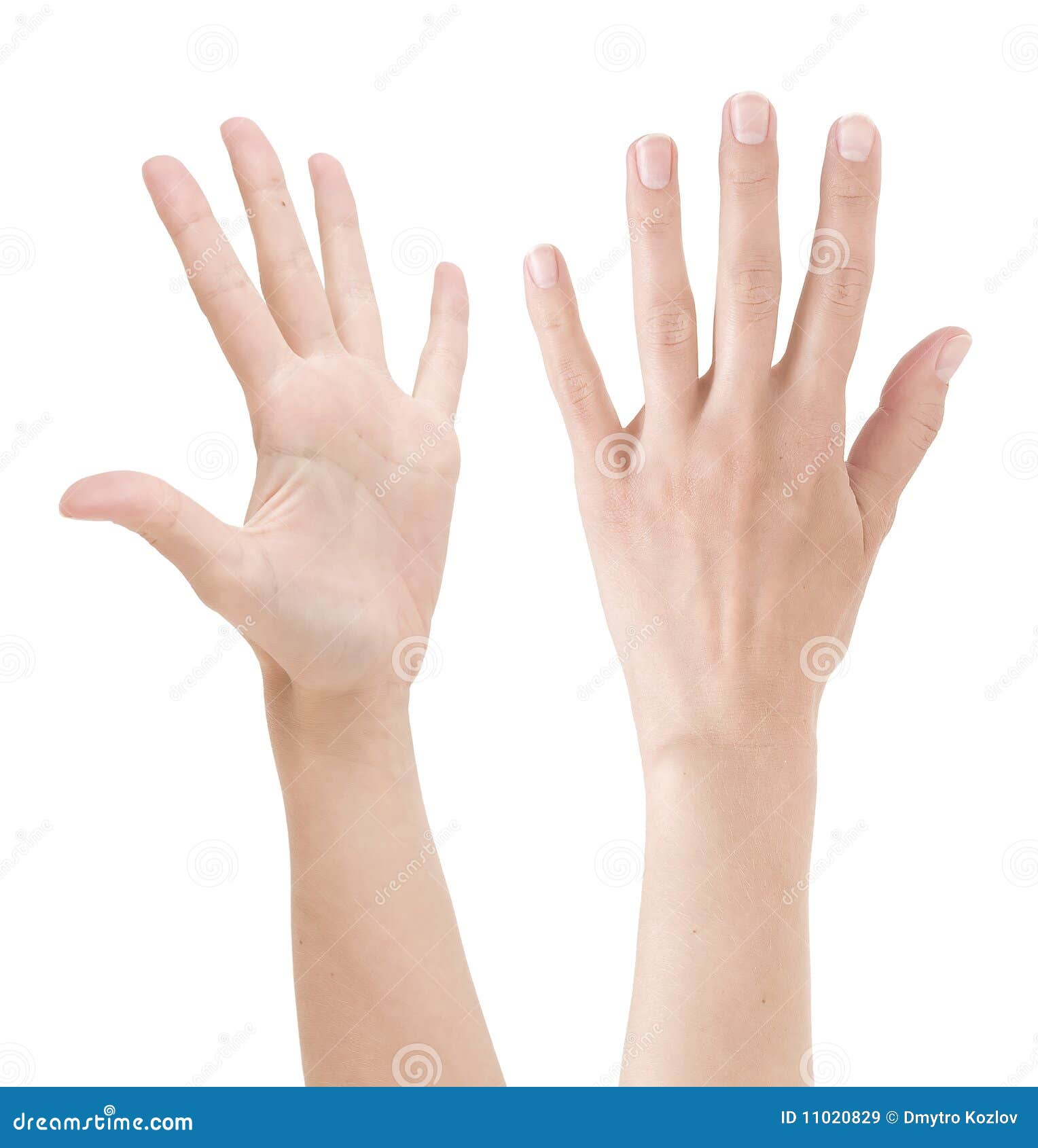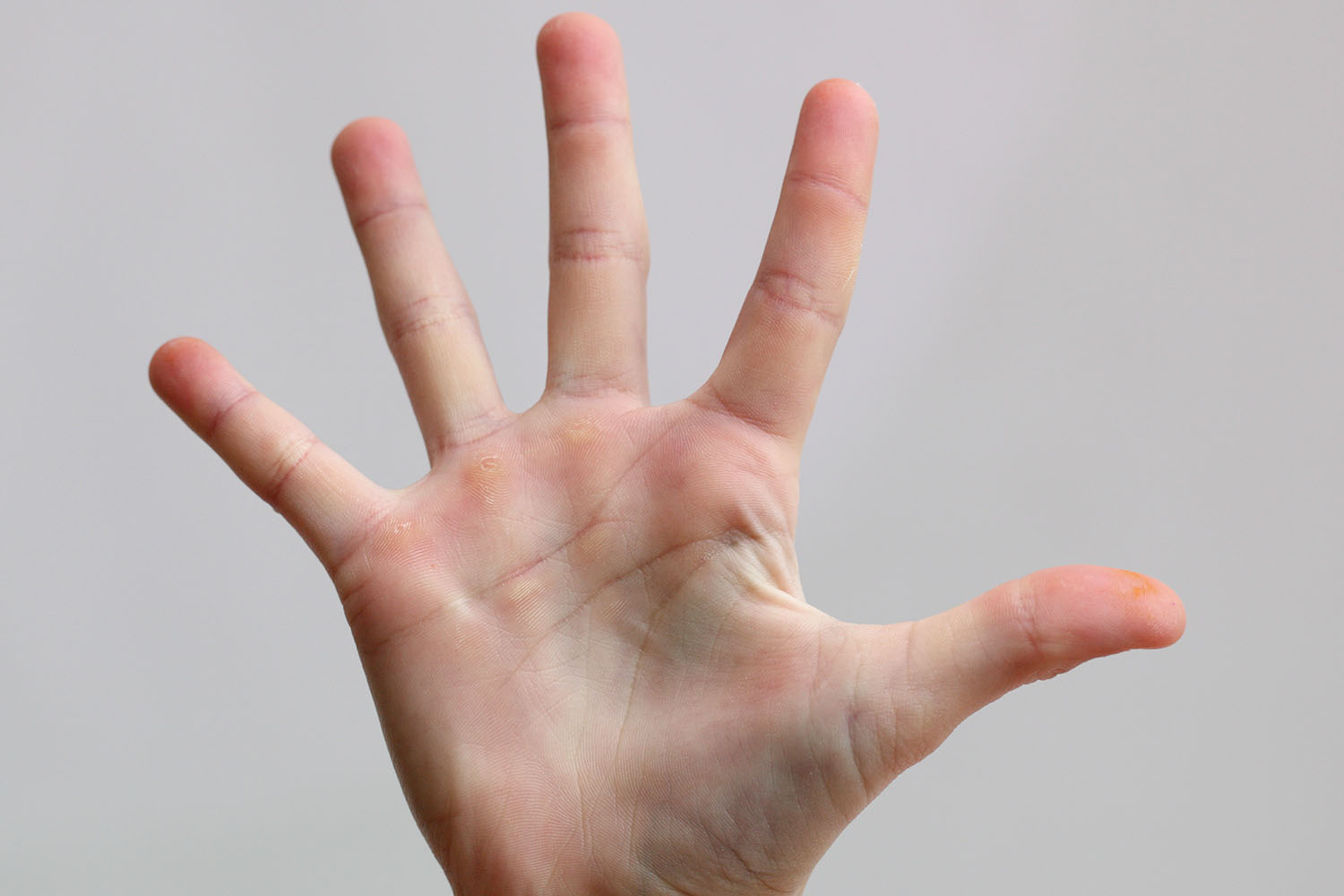The Hand Loom - A Celebration Of Human Dexterity
The hand loom stands as a remarkable testament to human ingenuity, a device where raw materials transform into something beautiful through the direct touch of human hands. This age-old craft, in a way, really brings us back to basics, connecting us with traditions that have been around for generations. It’s a process that relies so much on the delicate yet powerful capabilities of our own bodies, particularly those amazing tools at the end of our arms.
It’s quite fascinating to think about how much skill and precision goes into making fabric this way, isn't it? Every single thread, every pattern, it all comes together because of the intricate work performed by a person's hands. There's a sort of quiet magic in seeing plain yarn become a finished piece, all thanks to human effort and the unique abilities of our hands.
This process highlights just how special our hands truly are. They are, you know, incredibly detailed and allow for a huge range of movements and very fine control. Without these natural tools, the art of hand-loom weaving, as we've known it for ages, simply wouldn't be possible. It’s a craft that truly showcases the amazing design of our own bodies.
- Morgan Wallen Setlist Miami
- Many Summers Later Gravity Falls
- Timothy Olyphant A Multifaceted Talent In Hollywood
- Two Babies And One Fox
- Eliza Leaks
Table of Contents
- What Makes the Hand So Special for the Hand Loom?
- The Hand's Grasp - Essential for the Hand Loom
- How Does the Wrist Joint Aid in Hand Loom Work?
- The Intricate Bone Structure of the Hand and the Hand Loom
- Muscles, Ligaments, and the Hand Loom - The Power Within
- Why is Dexterity Important for the Hand Loom?
- The Hand's Sensory Role in Hand Loom Craft
- The Uniqueness of the Hand and the Enduring Art of the Hand Loom
What Makes the Hand So Special for the Hand Loom?
The human hand is a truly remarkable part of our body, and it's quite important for tasks like working with a hand loom. It's not just a simple tool, you know, but a very complex piece of living equipment. It has this amazing ability to move in many ways and bend quite a bit, especially in its fingers and thumb. This ease of movement in the whole hand is what makes it so good for handling delicate threads and making sure everything lines up just right when weaving. A weaver’s hands are constantly moving, reaching, and adjusting things on the loom, and this is all possible because of the hand's natural design.
Think about the way a weaver might pick up a single thread, or maybe push a row of threads into place. That kind of exact action needs a body part that can do small, careful movements. Our hands, with their many parts working together, allow for this kind of careful operation. It’s almost as if they were made for such detailed work. The hand can change its shape and position so quickly, which is, in a way, a huge help when you are trying to keep a steady rhythm on the loom. This flexibility is key to the flow of the weaving process, letting the maker adapt to what the fabric needs as it grows.
The way the hand can bend and twist, even at the very ends of the fingers, means it can get into tight spots and manage small pieces of material. This is very useful when working with the fine threads used in hand-loom projects. Without this built-in bendiness, the detailed work of creating patterns and ensuring even tension would be much, much harder, perhaps even impossible. So, in some respects, the hand is perfectly suited for the demands of this traditional craft.
- Ymaal
- Unveiling The Charisma Of John Stamos Young
- Emily Compagno Husband
- Exploring Malachi Bartons Relationships The Young Stars Personal Connections
- Hot Girls Meme
The Hand's Grasp - Essential for the Hand Loom
Our hand is essentially a holding part, located at the very end of our arm. This holding ability is absolutely vital for anyone working with a hand loom. Imagine trying to guide a shuttle, which is a tool that carries the thread across the width of the fabric, without a strong, reliable way to hold it. It would just not work, would it? The hand's design allows it to wrap around objects of different sizes and shapes, giving the weaver the necessary control over their tools and materials.
This holding function isn't just about strength, though that's important too. It’s also about the fine control the hand provides. When you are working on a hand loom, you often need to hold something firmly but also be able to let go or adjust your hold very quickly. This is where the amazing coordination of the hand comes in. It allows the weaver to keep a steady grip on the shuttle as it moves, or to hold a group of threads just so, before letting them go at the exact right moment. This kind of precise handling is a big part of what makes a hand-woven piece look so good.
The fingers and thumb, working together, create a kind of pincer grip, which is particularly good for picking up and manipulating individual threads. This is crucial for fixing mistakes or for introducing new colors into a pattern. The hand can shift from a wide, open hold to a very tight, focused grip in an instant, which is a very useful thing when you are making fabric by hand. So, the hand's ability to grasp and release with such accuracy is, you know, a fundamental requirement for the art of the hand loom.
How Does the Wrist Joint Aid in Hand Loom Work?
The wrist joint, which is the connection point between the hand and the forearm, plays a surprisingly big role in hand-loom weaving. It’s not just about the hand itself moving, but how the hand is positioned and moved in space. The wrist allows the hand to turn, bend up and down, and move from side to side. This range of motion means a weaver can reach across the loom, guide threads in different directions, and apply force from various angles without having to move their whole arm or body as much. It’s a very helpful pivot point, really.
When a weaver is pushing down a row of threads, for example, the wrist helps to transfer the power from the arm into the hand, making the movement smooth and effective. Or, when they are picking up a thread from a specific spot on the warp, the wrist allows for the fine adjustments needed to get the fingers exactly where they need to be. This kind of subtle positioning is what gives the weaver such great control over the fabric they are creating. It’s a bit like a natural swivel, allowing for quick changes in direction and application of effort.
The constant, repetitive motions involved in hand-loom work mean that the wrist joint is always in action. Its ability to absorb some of the impact and allow for fluid, continuous movement helps to prevent strain and makes the long hours of weaving more manageable. So, in a way, the wrist is a silent partner in the weaving process, providing the stable yet adaptable base for all the detailed work that the hand performs. It’s a very important part of the whole setup, as a matter of fact.
The Intricate Bone Structure of the Hand and the Hand Loom
The human hand is made up of many different bones, and this detailed framework is what gives it its incredible ability to move and handle things. There are 27 bones in each human hand, which means a total of 54 bones if you count both hands. This large number of small bones, along with the muscles and the tissues that connect them, gives the hand its shape and allows for all the different motions it can perform. This is, you know, a huge reason why the hand is so good at working with a hand loom.
These bones are not just a rigid structure; they are arranged in a way that allows for a vast amount of movement and very fine control. For instance, the palm has five bones called metacarpals, and each finger, except for the thumb, has three smaller bones called phalanges. The thumb has two. This arrangement means that each finger can bend and move independently, and also work together with the others. This is very useful when a weaver needs to separate individual threads or create a specific tension in the warp.
The sheer number of joints created by these bones means that the hand can adapt to almost any shape or task. When working on a hand loom, a weaver's hand might need to be flat to press down threads, or curved to hold a shuttle, or pointed to pick out a single strand. The complex bone structure provides the underlying support for all these different positions and actions. It’s almost like a natural set of levers and pivots, allowing for both broad movements and very tiny, careful adjustments. So, the bones are, in some respects, the very foundation of the hand's weaving ability.
Muscles, Ligaments, and the Hand Loom - The Power Within
Beyond the bones, the hand is also full of muscles and the strong, flexible tissues called ligaments. These parts work together to give the hand its ability to move and its strength. The muscles allow the fingers and thumb to bend, straighten, and spread apart, while the ligaments hold the bones together and keep the joints stable. This combination of moving parts and steady connections is what makes the hand such a powerful and precise tool for working with a hand loom. It’s truly a remarkable system, actually.
Some of the muscles are inside the hand itself, and these are especially important for the very fine, detailed movements needed in weaving. These "intrinsic" hand muscles allow for things like pinching, cupping the hand, and moving individual fingers with great independence. This means a weaver can, for example, gently pull a thread to adjust its tension, or firmly press down a row of weft without disturbing the surrounding threads. This kind of subtle control is, you know, what separates a good weaver from an average one.
The ligaments, on the other hand, provide the stability that allows the muscles to do their work effectively. They keep the joints from moving too much or in the wrong direction, ensuring that the hand's actions are focused and controlled. When a weaver is applying force, like when they are beating down a line of thread, the ligaments help to keep the hand's structure firm. This allows the power from the arm to be transferred efficiently through the hand to the loom. So, the muscles and ligaments are, in a way, the engine and the framework that make the hand loom work possible.
Why is Dexterity Important for the Hand Loom?
Dexterity, which is really just a way of saying skill and quickness with the hands, is incredibly important for anyone using a hand loom. The hand and wrist are complex structures at the end of our arms that let us touch and control objects with great care. This ability to interact very precisely with our surroundings is what allows a weaver to perform the many detailed tasks involved in making fabric. It’s not just about moving things, but moving them exactly where they need to go, and often very quickly.
Consider the process of passing a shuttle through a narrow opening of threads, or picking up a dropped thread from a dense warp. These actions require a very high degree of hand skill and coordination. The weaver needs to be able to judge distances, apply just the right amount of force, and make very small, accurate movements with their fingers. This kind of precise action is a core part of hand-loom weaving. It’s almost like playing a musical instrument, where every movement counts and has to be just right.
The hand’s ability to change tasks rapidly, from a strong grip to a delicate touch, is also a sign of its great skill. A weaver might be pulling a heavy lever one moment and then gently adjusting a single thread the next. This quick shift in required action is something our hands are naturally very good at. So, the natural quickness and carefulness of the hand are, in some respects, what makes the hand loom such a versatile tool for creating all sorts of woven goods. It really is a testament to what our hands can do.
The Hand's Sensory Role in Hand Loom Craft
Our hands are not just about movement and strength; they also have a vital sensory role. They help us touch, hold, and move objects every day, and this sense of touch is incredibly important for working with a hand loom. The hand is full of tiny nerve endings that send information back to our brain about what we are touching. This means a weaver can feel the texture of the yarn, the tension of the threads, and even small imperfections in the fabric as it is being made. This feedback is, you know, essential for quality work.
When a weaver is passing a shuttle, they can feel if the threads are too tight or too loose, or if something is snagging. This sensory information allows them to make immediate adjustments without even having to look closely. It’s a kind of intuition that develops with practice, based on what the hands are feeling. This continuous flow of information helps the weaver maintain consistency in their work and produce a well-made piece of cloth. It’s a very subtle but powerful aspect of the hand's abilities, really.
The hand's ability to sense pressure and temperature also plays a part. A weaver might feel the slight warmth of friction as threads rub together, or the precise pressure needed to beat down a line of weft firmly but not too harshly. This detailed sensory input means the weaver is constantly connected to their work, allowing for a level of control that mechanical processes often cannot match. So, the hand's sense of touch is, in a way, a guiding force in the art of the hand loom, helping to ensure every piece is made with care and precision.
The Uniqueness of the Hand and the Enduring Art of the Hand Loom
Few parts of the human body are as unique as the hand. Its special design, with its many bones, muscles, and nerve pathways all working together, makes it an incredibly versatile and capable tool. This unique design is precisely why the hand has been so central to crafts like hand-loom weaving for thousands of years. The hand needs to be mobile so it can put the fingers and thumb in just the right spot, and it needs enough power to form the basis for normal hand actions. These qualities are absolutely vital for the demands of hand-loom work.
The hand's capacity for fine motor skills, combined with its ability to apply significant force when needed, makes it perfectly suited for the varied tasks involved in weaving. From the delicate act of separating individual warp threads to the strong, rhythmic motion of beating down the weft, the hand adapts seamlessly. This adaptability is, you know, what allows weavers to create such a wide range of fabrics, from very fine and delicate to thick and sturdy. It’s a pretty amazing natural tool, actually.
The enduring appeal of hand-loom products often comes from this direct human touch. Each piece carries the subtle marks of the weaver’s hands, the slight variations that machines cannot replicate. This connection between the human hand and the woven fabric is what gives hand-loom items their special character and value. The hand is the body part at the end of the arm that is used for holding, moving, and touching, and these basic actions are the very heart of the hand-loom craft. So, the hand's special qualities ensure that the art of the hand loom continues to be a cherished and respected skill.



Detail Author:
- Name : Geovanni Heidenreich
- Username : russel.colt
- Email : carolanne16@yahoo.com
- Birthdate : 1993-07-30
- Address : 387 Christy Green Elenafurt, VA 08711-6302
- Phone : 1-220-534-3287
- Company : Streich and Sons
- Job : Craft Artist
- Bio : Enim consequatur veniam unde voluptas sed id. Minima explicabo enim officiis iste et perspiciatis dolores ea. Doloribus nostrum ut odio debitis. Et nostrum praesentium et et qui praesentium expedita.
Socials
twitter:
- url : https://twitter.com/rohan2004
- username : rohan2004
- bio : Est delectus suscipit rerum itaque illo qui voluptatem est. Corporis aperiam neque amet aspernatur labore. Ut odit sit ducimus sequi a ipsam.
- followers : 4865
- following : 99
facebook:
- url : https://facebook.com/devonte_rohan
- username : devonte_rohan
- bio : Nisi dolorem est laboriosam voluptas aut fuga. Ullam cum et fugit dolorum.
- followers : 1579
- following : 897